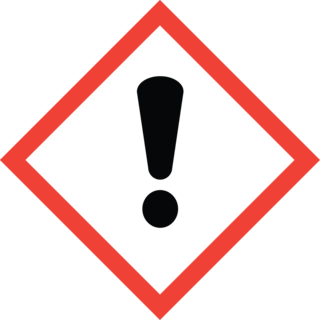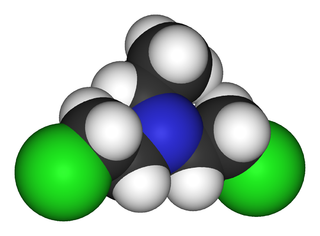Related Research Articles

The rose hip or rosehip, also called rose haw and rose hep, is the accessory fruit of the various species of rose plant. It is typically red to orange, but ranges from dark purple to black in some species. Rose hips begin to form after pollination of flowers in spring or early summer, and ripen in late summer through autumn.
Nongonococcal urethritis (NGU) is inflammation of the urethra that is not caused by gonorrheal infection.

Irritation, in biology and physiology, is a state of inflammation or painful reaction to allergy or cell-lining damage. A stimulus or agent which induces the state of irritation is an irritant. Irritants are typically thought of as chemical agents but mechanical, thermal (heat), and radiative stimuli can also be irritants. Irritation also has non-clinical usages referring to bothersome physical or psychological pain or discomfort.

Itch is a sensation that causes a strong desire or reflex to scratch. Itches have resisted many attempts to be classified as any one type of sensory experience. Itches have many similarities to pain, and while both are unpleasant sensory experiences, their behavioral response patterns are different. Pain creates a withdrawal reflex, whereas itches leads to a scratch reflex.

Tolnaftate (INN) is a synthetic thiocarbamate used as an anti-fungal agent that may be sold without medical prescription in most jurisdictions. It is supplied as a cream, powder, spray, liquid, and liquid aerosol. Tolnaftate is used to treat fungal conditions such as jock itch, athlete's foot and ringworm.

Formication is the sensation resembling that of small insects crawling on the skin, in the absence of actual insects. It is one specific form of a set of sensations known as paresthesias, which also include the more common prickling, tingling sensation known as pins and needles. Formication is a well-documented symptom which has numerous possible causes. The word is derived from formica, the Latin word for ant.

Swimmer's itch, cercarial dermatitis or schistosome dermatitis is a short-term allergic contact dermatitis occurring in the skin of humans that have been infected by water-borne schistosomes, a type of flatworm. It is common in freshwater, brackish and marine habitats worldwide. The incidence of this condition may be increasing, although this may be attributed to better monitoring and reporting. Nevertheless, the condition is considered to be an emerging infectious disease.

A bee sting is the wound and pain caused by the stinger of a female bee puncturing skin. Bee stings differ from insect bites, with the venom of stinging insects having considerable chemical variation. The reaction of a person to a bee sting may vary according to the bee species. While bee stinger venom is slightly acidic and causes only mild pain in most people, allergic reactions may occur in people with allergies to venom components.

Tioconazole is an antifungal medication of the imidazole class used to treat infections caused by a fungus or yeast. It is marketed under the brand names Trosyd and Gyno-Trosyd. Tioconazole ointments serve to treat women's vaginal yeast infections. They are available in one day doses, as opposed to the 7-day treatments commonly used in the past.

Vaginal discharge is a mixture of liquid, cells, and bacteria that lubricate and protect the vagina. This mixture is constantly produced by the cells of the vagina and cervix, and it exits the body through the vaginal opening. The composition, amount, and quality of discharge varies between individuals and can vary throughout the menstrual cycle and throughout the stages of sexual and reproductive development. Normal vaginal discharge may have a thin, watery consistency or a thick, sticky consistency, and it may be clear or white in color. Normal vaginal discharge may be large in volume but typically does not have a strong odor, nor is it typically associated with itching or pain. While most discharge is considered physiologic or represents normal functioning of the body, some changes in discharge can reflect infection or other pathological processes. Infections that may cause changes in vaginal discharge include vaginal yeast infections, bacterial vaginosis, and sexually transmitted infections. The characteristics of abnormal vaginal discharge vary depending on the cause, but common features include a change in color, a foul odor, and associated symptoms such as itching, burning, pelvic pain, or pain during sexual intercourse.
The International Association for the Study of Pain (IASP) is an international learned society promoting research, education, and policies for the understanding, prevention, and treatment of pain. IASP was founded in 1973 under the leadership of John J. Bonica. Its secretariat, formerly based in Seattle, Washington, is now located in Washington, D.C. It publishes the scientific journal PAIN, PAIN Reports and PAIN: Clinical Updates. IASP currently has more than 7,200 members from 133 countries and in 94 chapters worldwide. IASP supports 20 Special Interest Groups (SIGs) which members may join to network and collaborate with others in their specific field of research or practice.

Bis(2-chloroethyl)ethylamine is the organic compound with the formula C2H5N(CH2CH2Cl)2. Often abbreviated HN1, it is a powerful vesicant and a nitrogen mustard gas used for chemical warfare. HN1 was developed in the 1920s and 1930s to remove warts and later as a military agent. Because of the latter use, it is a Schedule 1 chemical within the Chemical Weapons Convention and therefore use and production is strongly restricted. It has never been used in warfare.

Referred itch or mitempfindung is the phenomenon in which a stimulus applied in one region of the body is felt as an itch or irritation in a different part of the body. The syndrome is relatively harmless, though it can be irritating, and healthy individuals can express symptoms. Stimuli range from a firm pressure applied to the skin – a scratch – to irritation or pulling on a hair follicle on the skin. The referred sensation itself should not be painful; it is more of an irritating prickle leading to the compulsion to scratch the area. The stimulus and referred itch are ipsilateral. Also, because scratching or putting pressure on the referred itch does not cause the stimulus area to itch, the relationship between the stimulus and the referred itch is unidirectional. The itching sensation is spontaneous and can cease with continued stimulation.

Nav1.7 is a sodium ion channel that in humans is encoded by the SCN9A gene. It is usually expressed at high levels in two types of neurons: the nociceptive (pain) neurons at dorsal root ganglion (DRG) and trigeminal ganglion and sympathetic ganglion neurons, which are part of the autonomic (involuntary) nervous system.
Pramocaine is a topical anesthetic discovered at Abbott Laboratories in 1953 and used as an antipruritic. During research and development, pramocaine hydrochloride stood out among a series of alkoxy aryl alkamine ethers as an especially good topical local anesthetic agent. Pharmacologic study revealed it to be potent and of low acute and subacute toxicity, well tolerated by most mucous membranes and of a low sensitizing index in humans. Like other local anesthetics, pramocaine decreases the permeability of neuronal membranes to sodium ions, blocking both initiation and conduction of nerve impulses. Depolarization and repolarization of excitable neural membranes is thus inhibited, leading to numbness.

Clotrimazole, sold under the brand name Lotrimin, among others, is an antifungal medication. It is used to treat vaginal yeast infections, oral thrush, diaper rash, tinea versicolor, and types of ringworm including athlete's foot and jock itch. It can be taken by mouth or applied as a cream to the skin or in the vagina.

Notalgia paresthetica or Notalgia paraesthetica (NP) (also known as "Hereditary localized pruritus", "Posterior pigmented pruritic patch", and "subscapular pruritus") is a chronic sensory neuropathy. Notalgia paresthetica is a common localized itch, affecting mainly the area between the shoulder blades (especially the T2–T6 dermatomes) but occasionally with a more widespread distribution, involving the shoulders, back, and upper chest. The characteristic symptom is pruritus (itch or sensation that makes a person want to scratch) on the back, usually on the left hand side below the shoulder blade (mid to upper back). It is occasionally accompanied by pain, paresthesia (pins and needles), or hyperesthesia (unusual or pathologically increased sensitivity of the skin to sensory stimuli, such as pain, heat, cold, or touch), which results in a well circumscribed hyperpigmentation of a skin patch in the affected area.
Scalp pruritus is an itchiness of the scalp, particularly common in elderly persons. Scalp pruritus is sometimes very unpleasant because itch and pain sensations share common nerve pathways.

The wide dynamic range (WDR) neuron was first discovered by Mendell in 1966. Early studies of this neuron established what is known as the gate control theory of pain. The basic concept is that non-painful stimuli block the pathways for painful stimuli, inhibiting possible painful responses. This theory was supported by the fact that WDR neurons are responsible for responses to both painful and non-painful stimuli, and the idea that these neurons could not produce more than one of these responses simultaneously. WDR neurons respond to all types of somatosensory stimuli, make up the majority of the neurons found in the posterior grey column, and have the ability to produce long range responses including those responsible for pain and itch.

Difelikefalin, sold under the brand name Korsuva, is an opioid peptide used for the treatment of moderate to severe itch. It acts as a peripherally-restricted, highly selective agonist of the κ-opioid receptor (KOR).
References
- ↑ Andersen, Hjalte Holm; Akiyama, Tasuku; Nattkemper, Leigh Ann; van Laarhoven, Antoinette; Elberling, Jesper; Yosipovitch, Gil; Arendt-Nielsen, Lars (July 2018). "Alloknesis and hyperknesis-mechanisms, assessment methodology, and clinical implications of itch sensitization". Pain. 159 (7): 1185–1197. doi:10.1097/j.pain.0000000000001220. hdl: 1887/73461 . ISSN 1872-6623. PMID 29659469. S2CID 4956447.